Trace elements for blooming and antifungal agents against diseases
Many thanks to Khalid and Anna for their honesty in posting pictures of mineral deficiencies in their roses' leaves. Khalid and Anna triggered my curiosity to dig up useful info. Blooming takes a lot of potassium & calcium & magnesium, plus trace elements. Roses become diseased after blooming, due to depletion of potassium & calcium, plus trace elements.
Rust, mildew, and blackspots are fungi that grow on leaves when the trace elements are depleted after blooming. The below link lists the antifungal agents.
http://www.thesilveredge.com/pdf/Antifungal_Properties.pdf
"Lukens (6) reviewed the work of S. E. A. McCallan and F. Wilcoxon, who examined the fungitoxicity of the elements in relation to their position in the periodic table. Generally, toxicity within a group increased with atomic weight. Silver and osmium were the most toxic elements. Data from J. G. Horsfall have been summarized (7) and show that metals are arranged in the following descending order of fungitoxicity: Ag > Hg > Cu > Cd > Cr > Ni > Pb > Co > Zn > Fe > Ca.
http://www.thesilveredge.com/pdf/Antifungal_Properties.pdf
*** From Straw: Listing in the order of the most potent antifungal properties: Ag stand for silver. Hg stand for Mercury. Cu stand for Copper. Cd stand for Cadmium. Cr stand for Chromium. Ni stand for nickel. Pb stand for lead. Co stand for Cobalt. Zn stand for zinc. Fe stand for iron. Ca stand for calcium. Let's see how Woodash stack up in anti-fungal properties later.
Below is a picture of 100% clean roses in my garden in late fall 2012, after frost zapped tomatoes in October (see dead tomato on right corner). They were mulched with a thick layer of horse manure at pH over 8 (stable limed their manure with shell-lime). There are many trace-elements and beneficial bacteria in horse manure which suppressed pathogenic fungi like blackspots, mildew, and rust. The roses pictured below are: Francis Blaise, Liv Tyler, and Pink Peace .. all were own-root roses:

Comments (21)
strawchicago z5
Original Author7 years agolast modified: 7 years agoThanks to Kimmsr in Soil forum who posted a link to Trace elements in Wood Ash years ago, I retained this data of trace elements in wood ash, see below:
Arsenic 6
Boron 123
Cadmium 3
Chromium 57
Copper 70
Lead 65
Mercury 1.9
Molybdenum 19
Nickel 20
Selenium 0.9
Zinc 233Compare that to antifungal trace elements, listed in the order of most potent: Silver, Mercury, Copper, Cadmium, Chromium, Nickel, Lead, Cobalt, Zinc, Iron, and lastly calcium.
Many trace elements are involved in blooming, particularly boron, copper, zinc, and calcium. Copper is chelated to organic matter, but zinc is not. Thus organic matter high in copper is the best defense against fungal diseases.
Brewer's yeast is high in chromium, but that INDUCED the worst blackspots ever, when I tested it, thanks to its acidic pH of 4. Trace elements compete with each other for absorption, thus too much chromium or zinc can suppress the #1 anti-fungal agents of silver, mercury, and copper.
Let's compare wood-ash to ground limestone. Limestone falls short of wood-ash, but high in calcium at 31 mg/kg, high in magnesium at 5.1. Limestone has copper at 10 (woodash has 70 copper), lead at 55, same nickel as woodash at 20 mg/kg, zinc at 113 compared to woodash at 233. (nickel is noted for disease-prevention in plants).
http://hubcap.clemson.edu/~blpprt/bestwoodash.html
pH woodash is 10.4 versus pH of limestone is 9.9
Woodash also contains 123 mg/kg of Boron, which is vital for blooming. Boron is less available in alkaline pH. My soil in Chicagoland is dolomitic/limestone alkaline clay.
Woodash has 70 mg/kg of copper, a fungicide in Bordeux mixture. It has 233 mg/kg of zinc (compared to 113 in limestone) a fungicide fraction in Mancozeb spray. It has boron, another fungicide for dry rot. It has 65 mg of lead, compared to 55 mg of lead in limestone, also a fungicide. Finally woodash has 57 mg of chromium, another fungicide. Here is a link that might be useful: Clemson.edu on wood ash
strawchicago z5
Original Author7 years agolast modified: 7 years agoSilver, mercury, and copper are the top 3 elements that kill fungus. Sunflower seeds is high in copper, and used to be in the old Rose-Tone's ingredients .. but that gets expensive, so they replaced with more chicken-manure.
I did tested sunflower seeds in the planting hole, but that didn't help blackspots due to poor-drainage. Also lentils is cheaper and have more copper than sunflower seeds, so that will be my next experiment.
Copper is not available to plants unless it's chelated to organic matter, whereas zinc and manganese don't have to be chelated.
An ounce or 1/8 of a cup hulled sunflower seeds has 512 micrograms of copper. The highest amount of Copper is found in Lentils, pink, raw which contains 1,303 mg of Copper per 100g, or 3/4 cup of lentils.
http://www.dietandfitnesstoday.com/copper-in-lentils.php#WzkeqRoflI8XB0Vp.99
Sesame seeds is also high in copper .. but too expensive to test. Herbs like mint has decent copper. I did pour a big pitcher of pureed fresh mint on Sundowner rose (the most blackspot and mildew-prone rose ever bred !!). Will post before/after pic. later.
For Khalid: I'm very excited to find official government data on the nutritional value in peppermint, see below link. Peppermint pureed wilted my cut-Pink-Peace bloom immediately .. must be from the salicylic acid (good for rooting, but lousy for cut-blooms). I did test fresh peppermint soaked in rain-water for my roses in pots, no harm was done.
http://www.nutrition-and-you.com/peppermint.html
In 100g of peppermint, it has lots of B-vitamins, vitamin A at 141%, vitamin C at 53% (necessary for plants' growth), 12% potassium, 24% calcium, 36% copper, 63% iron, 20% magnesium, 51% manganese, and 10% zinc.
Related Professionals
Beachwood Landscape Architects & Landscape Designers · Vernon Hills Landscape Architects & Landscape Designers · Surprise Landscape Contractors · Waterbury Landscape Contractors · Bowie Landscape Contractors · Brownsville Landscape Contractors · Danvers Landscape Contractors · East Patchogue Landscape Contractors · Ellicott City Landscape Contractors · Methuen Landscape Contractors · Middletown Landscape Contractors · Northport Landscape Contractors · Palos Verdes Estates Landscape Contractors · South Farmingdale Landscape Contractors · Wilsonville Landscape Contractorsstrawchicago z5
Original Author7 years agolast modified: 7 years agoBelow link has fantastic pictures of mineral-deficiencies in plants:
http://www.pthorticulture.com/en/training-center/role-of-copper-in-plant-culture/
Function of Copper: It is also required in the process of photosynthesis & others. Copper also serves to intensify flavor and color in vegetables and color in flowers.
Deficiency: Copper is immobile, meaning its deficiency symptoms occur in the newer leaves. Typically the symptoms start as cupping and a slight chlorosis of either the whole leaf or between the veins of the new leaves. Within the chlorotic areas of the leaf, small necrotic spots may form, especially on the leaf margins. As the symptoms progress, the newest leaves are smaller in size, lose their sheen and in some cases the leaves may wilt. The apical meristems may become necrotic and die inhibiting the growth of lateral branches. Plants typically have a compact appearance as the stem length between the leaves shortens. Flower color is often lighter than normal.
strawchicago z5
Original Author7 years agolast modified: 7 years agohttp://www.pthorticulture.com/en/training-center/role-of-zinc-in-plant-culture/
Zinc is essential in the formation of auxins, which help with growth regulation and stem elongation. Deficiency: Like most micronutrients, zinc is immobile, meaning the deficiency symptoms occur in the new leaves. Typically they are expressed as some varying pattern of chlorosis of the new leaves (often interveinal) and necrotic spots may form on the margins or leaf tips. These new leaves are smaller in size and often cupped upward or distorted. The internodes shorten, giving the plant a rosette appearance and bud development is poor resulting in reduced flowering and branching."
http://www.pthorticulture.com/en/training-center/role-of-zinc-in-plant-culture/
strawchicago z5
Original Author7 years agolast modified: 7 years agoThese are antifungal trace elements, listed in the order of most potent: Silver, Mercury, Copper, Cadmium, Chromium, Nickel, Lead, Cobalt, Zinc, Iron, and lastly calcium.
Interesting that nickel is described as important to fight against plant pathogens, see below link for a picture of nickel deficiency:
http://www.pthorticulture.com/en/training-center/role-of-nickel-in-plant-culture/
Function of Nickel: Without nickel, toxic levels of urea can accumulate within the tissue forming necrotic legions on the leaf tips. In this case, nickel deficiency causes urea toxicity. Nickel is also used as a catalyst in enzymes used to help legumes fix nitrogen. There is evidence that nickel helps with disease tolerance in plants.
Deficiency: Minor nickel deficiency displays no visual symptoms, but can reduce growth and yield of plants. Significant nickel deficiency will display visual symptoms typically in the old leaves of the plants as nickel is a mobile element. Deficiency symptoms in legumes are exhibited as whole leaf chlorosis along with necrotic leaf tips (caused by the accumulation of toxic levels of urea). The leaves develop a condition called “mouse-ear” in which the leaflets are small with rounded tips vs. long and pointed.
strawchicago z5
Original Author7 years agolast modified: 7 years agoFor calcium, the below site stated that tap water from deep wells (like my deep well water at pH near 9 has plenty of calcium), but water from rain/lake/river/pond is deficient in calcium. Heavy rain also leaches out potassium, calcium & magnesium from soil.
http://www.pthorticulture.com/en/training-center/role-of-calcium-in-plant-culture/
Calcium Source - Water coming from deep wells or most non-coastal regions of North America has sufficient calcium for normal crop growth, while water from a shallow well, coastal region, rain, lake, river or pond generally has insufficient calcium levels.
strawchicago z5
Original Author7 years agolast modified: 7 years agoLet's compare the copper content in red-lava-rock versus cracked corn:
http://www.palmercc.com/lavarock.htm
Nitrate Nitrogen.................................4.0 p.p.m.
Phosphorus........................................6.0 p.p.m.
Potassium.........................................59.0 p.p.m.
Zinc.........................................................6 p.p.m.
Iron..................................................10.0+ p.p.m.
Copper...............................................5.5+ p.p.m.
Magnesium.......................................2.0+ p.p.m.
Boron.................................................10.0 p.p.m.
Sulfate.................................................7.0 p.p.m.
Organic Material...........................................5%
PH.........................................................8.2 Units
Calcium..................................1.3 Meq/100 gmAbove are values for red-lava, let's consider cracked corn below.
Cracked corn is acidic at pH 4, to neutralize my alkaline soil at pH 8.
http://nutritiondata.self.com/facts/cereal-grains-and-pasta/5687/2
NPK of corn meal is 1.6 / 0.65 / 0.4 .... that's better than horse manure NPK of 0.44 / 0.17 / 0.35. Whole-grain corn's minerals profile: 53% magnesium, 25% iron, 35% phosphorus, 14% potassium, 40% manganese, plus anti-fungal agents of 37% selenium, 24% copper, and 26% zinc.
The copper in corn is more available to plants since it's chelated to an organic, rather than hard-mineral like red-lava. I put corn in a few planting holes: very good in deepening the color. Yves-seedling is giving me dark pink blooms now in a pot (I moved it, to loosen up the hard-clay). When it was in its previous hole (fixed with cracked corn), the blooms were deep red.
Crack-corn with a balanced supply of trace elements, plus good-drainage gave 24% copper anti-fungal agent to my Tchaikosky, Double Delight, Gruss an Teplitz, and Comte de Chambord. I also water them with red-lava-water. See July pics. below:
Both Double-delight and Gruss are known as blackspot & fungus-prone ... but they are clean with cracked corn in the planting hole. Also cracked corn gets moldy, which provides mycorrhyzal fungi for optimal nutrients uptake. Red lava is a good supply of anti-fungal trace-elements, but it needs to be soaked in acidic rain water. Some pics. of Double-Delight and Gruss taken during July, 2016 in humid & rainy weather: Gruss an Teplitz with Sundowner next to it:
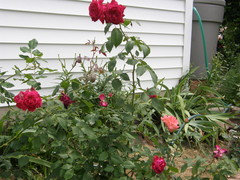
Double-Delight picture taken July 27, 2016, after prolonged rain & humidity over 60%:
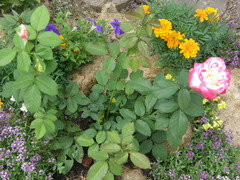
Tchaikosky, 2nd year own-root with cracked corn in planting hole. Pic. taken July 27.
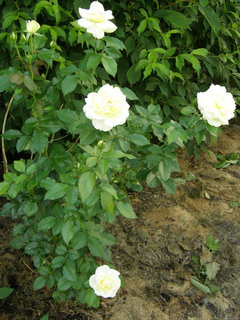
Comte de Chambord, as 4th year own-root (tons of cracked corn & gypsum in planting hole), picture taken early July:
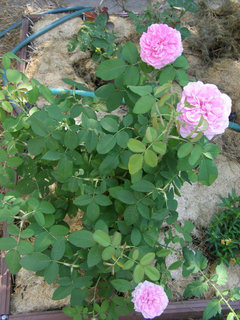
Radio Times (an Austin rose), picture taken July 15, also has cracked corn (pH 4) in the planting hole, and red-lava-rock (pH 8.2). Both provide slow-released anti-fungal agent of copper & other trace elements.
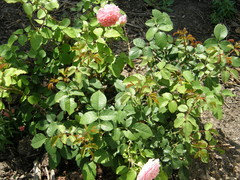
strawchicago z5
Original Author7 years agolast modified: 7 years ago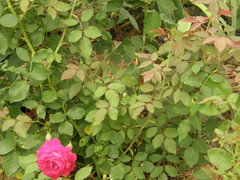
Above pic. is the base of Gruss an Teplitz (BS-prone) after week-long of rain and humidity over 60%. Picture taken July 27, only a few leaves with blackspot. Gruss, the parent of Dr. Huey, is known as blackspot and mildew prone.Note the crinkled leaves (copper-deficiency) of Sundowner rose on the lowest right side of picture. I did not put cracked corn in Sundowner's hole, and regret it terribly, it's infested with blackspots, while Gruss is OK. I'm testing pureed mint on Sundowner right now.
strawchicago z5
Original Author7 years agolast modified: 7 years ago2 tablespoon of fresh peppermint has 5% manganese, 3% copper, and 3% vitamin C. Mint wilted my cut-blooms really bad in the vase (salicylic acid, which is used in rooting) .. I tested too much mint with cut-blooms, like 1/2 cup.
http://www.whfoods.com/genpage.php?tname=foodspice&dbid=102
Lentils is very high in molybdenum (most lacking in acidic soil), plus high in copper. It's easier to soak lentils overnight, then pureed it with a blender, to feed to Sundowner rose, than to dig it up ... I'll try lentil-pureed if the mint fails on Sundowner.
Another possibility is the bare-root hasn't grown well in soil (bought in May as a tiny stick grafted on Dr. Huey). It was healthy during blooming, but became a BS-fest after blooming, so the tiny root wasn't able to obtain nutrients from soil.
See below link for lentil nutrients:
http://www.whfoods.com/genpage.php?tname=foodspice&dbid=52
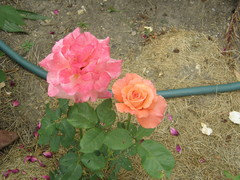
strawchicago z5
Original Author7 years agolast modified: 7 years ago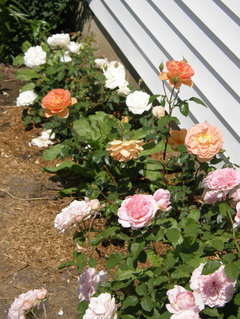
Above picture is my Austin roses (Mary Magdalene, Pat Austin, and Radio Times) at 80 degree summer heat .. that's during their 2nd year in 2012. They were planted in Scott's Top soil (made of acidic peatmoss & local clay & woodash to impart the black color). They were very healthy & bloomed lots, until I gave it a 2nd application of acid-fertilizer with chemical nitrogen .. that was too salty, and some leaves got mildew. That's the 1st time I had mildew on roses !!
From that time on, I quit buying chemical fertilizer with ammonia and urea (salt index of over 80). These roses were 100% healthy in Scott's bagged soil .. good stuff made from local clay and wood-ash mixed together. Bagged Soil (with wood-ash) is a cheaper buy and more anti-fungal agents than fertilizer.
Wood-ash has 233 of zinc, Boron 123 .. these are vital for blooming.
Cadmium 3 Chromium 57 Copper 70 - These are anti-fungal agent.
Lead 65 Mercury 1.9 Molybdenum 19 More anti-fungal agent.
Nickel 20 Selenium 0.9 More anti-fungal agent. pH of woodash is 10.4My roses were healthy (zero blackspots) when I topped them with bagged soil (with wood-ash). But my roses had more blackspots when I used chicken manure (too much salt & phosphorus & plus antibiotics)
Chicagoland Ace Hardware has the best bagged-top-soil. I once put some of that bagged top soil, plus grass seeds .. and the grass were twice taller than my lawn !!
strawchicago z5
Original Author7 years agoMany thanks to Filly from Florida who tested spirulina and confirmed my result in Chicagoland with Spirulina (blue-green algae), zero-salt, compared to high-salt kelp. Re-post the info. from the other thread:
For super-healthy leaves (shiny luster & perfect green & larger), spirulina beat everything I tried: kelp, mint or alfalfa-tea, dried herbs, corn, red-lava, horse manure, pea-gravel-water, and Azomite. For some reasons, leaves get large and shiny with spirulina.
I tested Azomite with sulfate of potash, hoping to improve blackspots on roses grafted on Dr.Huey .. that DIDN'T WORK, leaves curl down, not healthy.
I spent lots of time on researching anti-fungal trace-elements. Re-post here: Antifungal trace elements, listed in the order of most potent: Silver, Mercury, Copper, Cadmium, Chromium, Nickel, Lead, Cobalt, Zinc, Iron, and lastly calcium. Azomite has cobalt, but that's way behind copper.
Spirulina is super-healthy food for humans, and does wonder for plants. An excerpt from link below:
"the blue-green alga Spirulina platensis has drawn more attention because shows an high nutritional content, characterized by a 70% protein content and by the presence of minerals, vitamins, amino acids, essential fatty acids.
While some trace elements are considered toxic (i.e. As, Br, Cd,Hg, Pb, Sb), others are considered essential (Cu, Zn) or necessary to human body (Cr, Se). The toxic heavy metal levels fall in the range of normality with no hazard for users."
*** From Straw: As stand for Arsenic, Br for Bromine, Cd for Cadmium (right behind copper in anti-fungal potency), Hg for Mercury (2nd-rank in anti-fungal), Pb for lead (ahead of zinc in anti-fungal), and Sb for Antimony.
For the human-safe trace-elements in Spirulina, Cu for copper (blooming & strong anti-fungal), Zn for zinc (vital for plants' health & blooming). Cr for chromium (sugar-metabolism), and Se for Selenium (anti-cancer and anti-fungal).
If you consider the chemical analysis, spirulina beat Azomite by far. Antifungal trace elements, listed in the order of most potent: Silver, Mercury, Copper, Cadmium, Chromium, Nickel, Lead, Cobalt, Zinc, Iron, and lastly calcium.
strawchicago z5
Original Author7 years agoBest buffer for acidic rain is Clay, esp. the lighter color has free lime, or available calcium. The lighter & heavy clay is high in pH.
Clay with free lime (calcium) helps with nitrogen and calcium uptake, to keep leaves solid. My William Shakespeare 2000 (own-root) used to have large holes in its leaves after at least 30 gallons of rain dumped on it (overflow from the rain-barrel).
I fixed the drainage, but when it rained, there's holes in the leaves. Finally learned that calcium & potassium & magnesium leach out the most during rain. Since W.S. likes it acidic, I gave it gypsum plus clay on top, and no more holes after that. Alkaline clay is high in calcium & potassium and magnesium.
Acidic clay, or soft clay like my last house is high in manganese, iron, and aluminum (toxic to root). Raising the pH through dolomitic lime makes aluminum LESS AVAILABLE, plus RELEASE calcium & magnesium. Below are excerpts from CLEMSON Extension:
http://www.clemson.edu/extension/hgic/plants/other/soils/hgic1650.html
"Rainfall also affects soil pH. Water passing through the soil leaches basic nutrients such as calcium and magnesium from the soil. They are replaced by acidic elements such as aluminum and iron. For this reason, soils formed under high rainfall conditions are more acidic than those formed under arid (dry) conditions.
Application of fertilizers containing ammonium or urea speeds up the rate at which acidity develops. The decomposition of organic matter also adds to soil acidity."
Clay is the holding substance for nutrients, without clay, nutrients get leached out fast during heavy rain. Below are some pics. taken Sept. 30 showing the effect of reversal of blackspots by topping with calcium plus anti-fungal trace in chicken manure. Veteran Honor is a wimpy own-root in a fast-draining pot (I drilled at least a dozen holes), can't put clay on top, so I put gypsum (21% calcium) and chicken manure (high in anti-fungal trace elements)
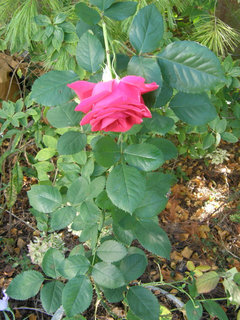
The danger zone is when leaves are really dark-green, that's when I put alkaline clay to make leaves paler & less prone to blackspots. Below is Pat Austin, pic. taken Sep 30. Note the DARKER-GREEN BS-prone lower half, and the PALER clean leaves, achieved by high pH clay, plus chicken manure to stimulate new growth, and sulfate of potash for buds. It's in less than 4 hours of sun, poor drainage. Will dig that rose up to fix drainage after it's done blooming.
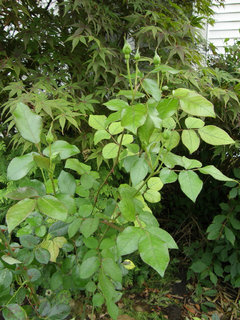
strawchicago z5
Original Author7 years agolast modified: 7 years agoThis summer I bought 14 own-root roses from Roses Unlimited, I kept them in pots to do experiments. Some pics. of Louise Este taken Sept. 30 to show how tons of rain can cause blackspot in very loamy potting soil, and reversal of blackspot through anti-fungal trace elements in chicken manure and horse manure.
Note the BS-old leaves from too much rain plus weekly SOLUBLE fertilizer NPK 5-3-5 (too low for fast leaching in rain). The pale leaves is through my testing high pH 9 tap water :
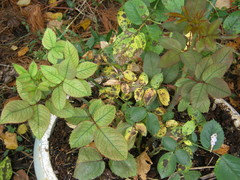
The same anti-fungal trace-elements (zinc, boron, and copper) is also used in forming flowers. This is to show roses consume a HUGE amount of nutrients in forming buds, and that's best through manure, or high NPK of 20-20-20 (with added trace elements).
At pH below 5 (acid rain), less calcium & magnesium & phosphorus and potassium available, thus high NPK fertilizer plus calcium is needed. Also loamy soil leaches out nutrients fast.
I grew roses in pots with weekly NPK 20-20-20 before, achieving 15 buds on Sonia Rykiel as 1st year own-root, but that didn't have daily acidic rain. My hard-well tap-water at pH 9 was actually good, it's high in calcium.
Now I understand why Chicago Botanical Garden recommends 3 applications of SOLUBLE NPK 20-20-20 per year for loamy soil. A high NPK is needed for loamy soil, since there's no clay to retain nutrients.
Below is Louise' 100% clean upper part through RECENT horse manure/chicken manure, plus it's forming a bud. Pic. taken Sept 30, after 3 days of constant rain:
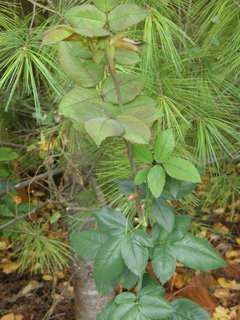
Note at pH 8 (alkaline clay), there's plenty of the major nutrients: magnesium, calcium, sulfur, potassium, phosphorus, and nitrogen, which contributed to healthy leaves.
At pH below 5 (Midwest or East coast acidic rain), magnesium, calcium, phosphorus are less available, and a bit less potassium & sulfur.
There's a study that show less mobile nutrients: calcium, zinc, boron, copper, iron are best supplied frequently at low-dose, rather than a big dump per year. Thus the logic for frequent, but low-dose of manure, or trace elements in SOLUBLE fertilizer.
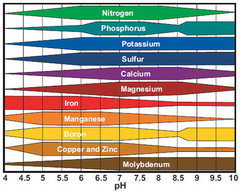
strawchicago z5
Original Author7 years agolast modified: 7 years agohttp://www.sciencedirect.com/science/article/pii/S0038071706005190
Trace and nutrient elements in manure, dung and compost samples in Austria
Although the high amounts of K and P were beneficial, there were some high concentrations of Na in biogas residues and pig manures. Intense additions of Cu, Zn, and Se are reflected in high loads in the respective excrements, as Austria is a low Se area. Composts and sewage sludges were higher in Al and lithophilic trace elements than were the excrements ... Factor analysis traced phosphates as the main source of Cd. Cr in processed matrices was significantly higher, and abrasion from tools should be considered in future investigations"
*** From Straw: antifungal trace elements, listed in the order of most potent: Silver, Mercury, Copper Cu, Cadmium Cd, Chromium Cr, Nickel, Lead, Cobalt, Zinc Zn, Iron, and lastly calcium. Selenium is also a strong anti-fungal agent.
My personal experience for the past 6 years: horse manure and chicken manure together works better than applying lime before acidic rain. Have really bad experience testing Encap compost on pots, due to the quick lime. Aluminum is toxic to plants (Milorganite sewage sludge was bad for both my lawn and roses), and I'm glad that chicken manure is high in zinc, copper, and boron.
http://www.ontariosoilcrop.org/wp-content/uploads/2015/07/V2Gen1.pdf
"Zinc and Copper are included in monograstric (swine and poultry) diets at much higher levels than minimum requirement for "normal" performance since when fed at higher levels they promote growth.
Horse manure samples in the study were particularly high in chromium, nickel, aluminum and iron. The source of nickel and chromium is not clear, but race harness bits used in the industry are often nickel or chrome plated and may have contributed to the concentration of these two metals. "
I also checked for trace elements in oyster shell lime:
https://www.researchgate.net/publication/18465435_Trace_Metals_in_Oyster_Shells
" Measurements using atomic absorption spectrometry have established the prescence of Pb, Hg, Cd, Zn, Cu, and Cr in shells of the oyster Crassostrea virginica in amounts considerably higher than their concentration in sea water."
BOS LIME is made from Ocean Shell, (Bluff Oyster Shell / Kina Shell). Trace elements and micro minerals such as Potassium Oxide, Magnesium Oxide, Colbalt, Zinc Oxide ."
strawchicago z5
Original Author7 years agolast modified: 7 years agoanalysis for crab shell: Nitrogen Total N (2.63%), Phosphate Total P205 (3.23%), Potash K20 (0.28%), Sulfur (0.2%), Magnesium (1.33%), Calcium (22.95%), Sodium (0.53%), Iron (3239 ppm), Manganese (56 ppm), Copper (23 ppm), Zinc (45 ppm), moisture (10.29%), pH (6)
The above is the content of Neptune Crab shell NPK 2-3-0, sold on Amazon at 4 lbs. for $16. WARNING: BOTH ARE STINKY, BEST BURIED IN PLANTING HOLE.
Down-to-earth Crab-meal fertilizer has higher NPK 4-3-0, coarse meal so it's slow release. 5 lbs. for $13.
Chicken manure is too salty for hot weather, and I had seen Prickles' (Bailey) Young Lycidas in a pot, with over 120 blooms, fertilized with salmon bits and shrimp shells.
strawchicago z5
Original Author7 years agoRe-post info. from another thread:
Signs of over-fertilization: wilting in hot sun, leaves curl down.
too acidic: leaves curl up & thinner, and blackspots.
too alkaline: leaves twisted & crinkled (copper def), pale leaves.
potassium def: zero blooms, smaller blooms, thin & weak stems, and blackspots.
calcium def: less petals in blooms, stunt growth & short bush, or tip of growth turns black.
nitrogen def: small leaves & pale lowest leaves, and less leaves
strawchicago z5
Original Author7 years agolast modified: 7 years agoQUESTION FOR KHALID: Pertaining to the fantastic deep color & many petals in your OWN-ROOT William Morris ... did you use the below fertilization? Thanks. My goal is to have deep-colors like yours !!
Khalid wrote: The composition of trace element supplement is Zn 4% / 40 grams per liter, Fe 2% / 20 gram per liter, Mn 2% / 20 grams per liter, B 1% / 10 grams per liter and Cu 1% / 10 grams per liter. Than, 36-0-12 also contains trace elements with the ratio of B 0.013%, Cu 0.025%, Fe 0.050% and Mn 0.025% with no Zn.
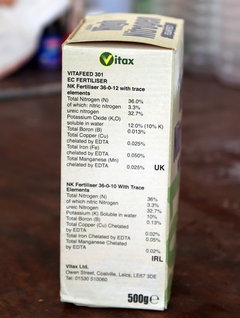
Khalid wrote: "I have twice given this rose (and other roses in pots) a doze of soluble mineral @ 1 tea spoon potash + 1 tea spoon soluble nitrogen fertilizer 36-0-12 with trace elements + 1 tea spoon of trace elements supplement (includes Fe,Zn, Cu, B, Mn) + 1 tea spoon of gypsum + 1 tea spoon of organic apple cider vinegar (to reduce effect of tap water) mixed in 15 liters of water. I did this because my routine compost was not available and during monsoon, the pots usually drain out most minerals when it rains for hours and hours."
http://forums.gardenweb.com/discussions/4211928/problem-rosesstraw-please-help?n=38
Other questions for Khalid: Does the apple cider help with deeper pink in own-root William Morris? Does the apple cider help with deeper blue in Rhapsody in Blue? THANK YOU. In my experience, horse manure (pH 8) really deepen the pink/red blooms ... from its iron & chromium & nickel & aluminum. BUT horse manure made my blue roses more red !!
strawchicago z5
Original Author7 years agoI once researched on Tradescant, and someone posted in a rose reference that woodash is excellent to throw around the bush to treat rust (fungus infection). I WOULD NOT APPLY wood-ash to the leaves, since its pH is too high .. would blind one's eyes if wind blows backward. Plus it's caustic to my finger when I got that from my neighbor's fireplace. Folks in California use wood-ash to kill weeds. Wood-ash is best on top of leaves, in the compost, and let rain dilute it.
- strawchicago z5 thanked lavenderlacezone8
Vaporvac Z6-OhioRiverValley
7 years agoYes, wood ash is a very caustic base. It's used to make lye which I use in the form Draino to make my home-made soap. However, I've applied a top-dressing of aged wood ash from my fireplace to my peonies for years. Perhaps the aging makes it less caustic. In any case, I'm always careful with it, but it's a good reminder for others not so familiar. I have some from my brush pile that I'll put on my leaves.
strawchicago z5 thanked Vaporvac Z6-OhioRiverValley










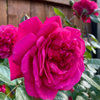
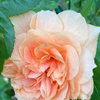
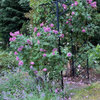
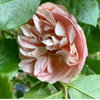
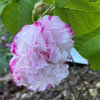
Vaporvac Z6-OhioRiverValley